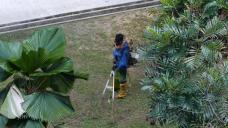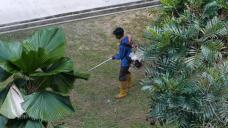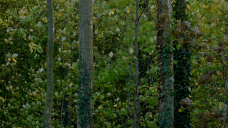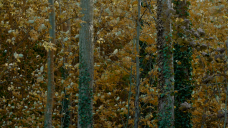
Please, support PV!
It allows to keep PV going, with more focus towards AI, but keeping be one of the few truly independent places.
It allows to keep PV going, with more focus towards AI, but keeping be one of the few truly independent places.
AVCHD maximum image quality settings and testing
-
There is a thread for extreme AVCHD settings, a thread for Stable AVCHD settings, and a thread for low GOP settings, but no thread for maximum image quality settings – so I’m starting one.
Maximum bitrate and low GOP are not virtues in isolation; rather they are tools for achieving results. Taking maximizing bitrate, for example: if that is the only goal you are unlikely to achieve optimum results from an image quality standpoint. If you set the bitrate so high that you can’t raise the AQ value individual frame image quality won’t be improved much. Raising AQ results in smoother and finer details, and that’s a good thing. Without raising AQ the image will remain harsh.
What about testing with low-contrast subjects? One of the benefits of the new patches has to do with smoother rendition of gradients. This arguably has more to do with the beauty of images than extreme edge detail.
I’m going to take a somewhat different approach to developing settings – at least some of the time. The steps that seem logical to me are as follows:
1. Increase bitrate to a relatively conservative level; 44M for the 24H bitrate, for example.
2. Raise AQ to 3, or maybe even 4.
3. Increase FB1, FB2, and frame limit so that individual I frames can be bigger if needed.
4. Raise the bitrate to the highest stable value that supports these settings.
You could do a similar sequence involving low GOP. Set the bitrate to a higher – but not extreme - level, set the GOP, set the quality related settings, and then start raising the bitrate to higher levels.
For testing:
1. Test for stability under a variety of scenarios. One test of extreme importance is to put the camera on a tripod and use manual or AFS focusing –this can cause a failure instantly that may never show up when the camera is hand held.
2. Test for detail, but also test for smoothness (subtle gradients, low contrast subjects, etc…).
3. Test for motion fidelity. Make sure subjects in the frame all move smoothly from frame to frame; especially in low-contrast portions of the frame.
4. Test with very high shutter speeds as well as normal ones – this really stresses the codec.
If there are motion problems, back off on the AQ and try again, etc...
Maybe you have some ideas about testing procedures that measure image quality rather than a single metric like bitrate or GOP.
[EDIT] Per Vitaliy's suggestion I'm posting my 44M and 66M settings here - I'll keep them updated.
The main issue with both settings is spanning. At 24H neither set span - hopefully there will be a solution soon. The other modes with the 44M settings, as far as I know, do span with a good SD card. The 44M settings operate at 44M AQ4 for 24H, and the 66M settings operate at 66M AQ2 for 24H. The main difference between the two is that motion is handled more robustly with 66M. The other modes have been stable for me - but I have to confess that I have not tested the PAL modes very much. You can change the AQ settings without having to make other adjustments. Note, however, that 66M AQ4 is harder on the codec than 66M AQ2 and may pose stability, in camera playback issues, etc....
Chris

 seti_66M_setj_44M_Settings.zip1007B
seti_66M_setj_44M_Settings.zip1007B -
Well I am trying to work on higher bitrates from the 1080i and the 720p settings, but its proving very difficult. About the card, yeah, as Ralph_B said the extreme pro has a lower write speed (as do any of the UHS-I cards it seems) but I've not had problems. Although the only one I use is an 8GB card, I've seen people post on here with larger extreme pro cards that have definitely had speed write problems, and those that haven't. Its all pretty vague.
Just did a quick test shooting detail and moving the camera about a fair bit in ETC mode. I got the same message you did trying to playback in camera. Another shot without ETC recorded after it played back in camera fine. I didn't create anything that looks as dramatically bad as you managed (as I really, really moved the camera about so it's hard to tell through the blur) but there are definite dropouts looking at it in streamparser (as in B frames of only a 7,680 byte size). Static shots seem okay with ETC though. So yeah, its not stable with the ETC mode, nice catch, thanks for the info. Dunno what to do about it however. -
Thanks Stray. I did try shooting other scene with ETC mode and it was fine. However I must say that those scenes don't have as much movement and detail as the grass cutting scene.
I hope that it's the ETC problem, which I can afford to avoid, cause I'm really happy with the quality from your 88M setting. Are you working on any new setting? -
I have no idea, I've never seen anything like that before. The only thing I can think of is the ETC mode, I seem to remember other patches having trouble with that mode, or I could be wrong. I never use ETC mode myself, so yeah thats something I haven't tested. Which is pretty crap of me, I forget entirely about the cameras ETC mode. There is no reason I can see why that shot would be difficult, even if it picked up the cutter blades they should just be a blur. Normally problems would show bad compression artifacts in the lower half of the frame, but this is the entire frame. Did you use ETC with other shots ? btw I've shot a lot with this patch on the same card as you (and slower ones too), so I don't think its card related, unless something went wrong with the card on this shot.
Anyone else have any ideas ? -
@ Stray. I attached a some screen shot regards to the 88M patch problem.
As mentioned, I shot for a good 15 minutes and everything was holding up nicely until I shot this scene with the grass cutter. BTW, I shot on the ETC mode, not sure whether it's of any concerned. All the other scene playback smoothly on camera and FCP.
The problematic scene will record without any error message but upon playback, the camera will display card error message and after ingesting into FCP, the image is all garbled.
I attached some files for reference, they are heavily compressed JPEG. The original 88M visual looks good though.

 Frame_Bad.jpg1920 x 1080 - 820K
Frame_Bad.jpg1920 x 1080 - 820K
 Frame_Bad_2.jpg1920 x 1080 - 946K
Frame_Bad_2.jpg1920 x 1080 - 946K
 Frame_Good.jpg1920 x 1080 - 759K
Frame_Good.jpg1920 x 1080 - 759K -
Another reason to transfer to an intermediate is to avoid the multi generation deterioration that can result from doing a lot of post work, which is why for compositing quite often the work is done with stills sequences, as well as it being a lot faster to work with.
-
royfel, brings up a good point.
If you're rendering out to your final media, this of course will be limited to what your target media datarate can offer. As Stray mentioned, if you want to continue working amongst different programs, you'll probably want to transcode to an intermediate such as DNxHD, Cineform, etc...
Also, as Isac mentioned in another thread here, you can frameserve out of Vegas to another program with no loss. Look into the free debugmode frameserver. I've used it before and it works great.
If you do and you are running Vegas 10 64bit, look for Isacs instructions in another thread for how to get this working correctly in Vegas 10 64bit.
-
Topic will be closed soon, and series 2 topic will be started.
-
I am editing in vegas, as you point out there are limits in export NOT import. I Just imported a MTS at 43.7 and it plays smoothly. Why export in AVCHD any higher than the limits you mention, what can you play it on? To archive and grade I use Cineform or Avid xHD: a lot easier on the computer.
-
I'm using Premiere Pro CS5.5 for editing which can also edit AVCHD natively. I transcode using 5DtoRGB to Avid DNxHD if I want/have to do colour correction/grading work in Scratch (then export to DPX sequences) and compositing work in Nuke which often I'll use DPX or TIFF still sequences in, though I've recently started using DNxHD with Nuke too. My workflow changes depending on what I'm doing. Simple stuff I'll do entirely in Premiere.
Exporting from Premiere I use the H.264 codec mostly, there is no bitrate limit in Premiere with it (though again what codec/container I export in can change depending on where/who I'm delivering too). I just purchased the Mainconcept plugin for Premiere, so I'm currently working my way through it to create a series of export settings to use. -
Thanks Stray for the detailed response. What is everyone editing their hacked footage in? Adobe Premiere? The limit for exporting in Sony Vegas is 21.9k for 24p footage and 26k for 1080p60 footage (in Vegas 10e). I just wonder what everyone is doing for their workflow as well.
Vegas does edit .mts natively by the way.. -
@Shield Spanning ? Chris's 44M AQ4 24L setting spans (32M). It also meets all your other requirements, except for the blip, even the stock setting has a small blip. You may not notice it though unless you do a lot of work on the clip. Its only the first 5-12 frames anyhow so just cut it off. The 1080i in Chris's 44M AQ4 is also stable, at 32M.
Some people will claim that other settings span, and if you're not shooting much detail so the current bitrate is quite low at the time it needs to span then it will. However, thats completely unpredicatable, so for now I think the 24L in the 44M AQ4 is the most reliable spanning setting.
Although I don't know vegas that well, if it can cope with mts files natively then you'll be fine there too. Actually, no hacked footage to my knowledge actually needs transcoding to another format before you edit with it (as long as your editor copes with AVCHD), it's just a workflow choice some people take.
As far as point 2 is concerned most of the settings posted now are stable under any shooting environment. All the long GOP settings are as far as I'm aware. You may find the AQ4 motion of the 44M patch isn't good enough, so you could lower it to AQ3 or AQ2, but then you may lose detail in lower lit areas of your image. Other than that you'll have to go up some in bitrate and lose the ability to span. >32M spanning problems are likely is it pretty much right now. -
Hi guys. Just got done reading this entire thread. My head hurts to say the least. Can anyone suggest the hack that meets the following?
1. Spans
2. Stable under any shooting environment (i.e. more detail, any lens, any shutter speed).
3. Can be copied and edited in Vegas Pro 10 without converting to an intermediary format.
4. No "blips" in the beginning.
5. I shoot 1080p24 mostly but sometimes 1080i60, so I'd like the hack to address both of these.
Thanks! I am a contributor to the site.
Shawn -
I know that it would add a lot to the test if there was motion, but I'm still working on a way to have a motion comparison that is consistent and repeatable. I'll have to take a look around the house and garage and see what I can come up with =)
-
Thanks! Nice shadow details for the hack.
Any moving footage for comparison? -
I hope this patch comparison video is useful. The YouTube description has a link to the original mp4 file if you want to view it at full quality. I'm very interested to hear people's impressions.
cbrandin 66m GOP12 AQ2 1080p
cbrandin 32m GOP12 AQ2 720p
driftwood 132m GOP3 AQ2 1080p
driftwood 64m GOP3 AQ2 720p
mpgxsvcd 42m GOP12 AQ4 1080p
mpgxsvcd 32m GOP12 AQ4 720p
STOCK 24m 1080p
STOCK 16m 720p
-
@rsquires I've added stable 1080i and 720p to my settings file. The 1080i is at 32M and the 720p is at 24M. I think in the next few days I'll try and tweak up the 1080i to a higher bitrate. Its all still running at AQ2 so it would benefit greatly from a higher bitrate.
Edit : These settings come from Chris's 44M AQ4 which is very stable. As this is the case you could run the 720P now at AQ4 with no problem. Oh also, in camera playback of this 88M patch is perfectly fine, did a lot of that the other day shooting some kids doing Parkour.
 setg.zip506B
setg.zip506B -
@rsquires Yes, sorry only the 24H and 24L (64M) settings are stable on that patch. If you find a 1080i and/or a 720P setting you like from another patch you could add them to that patch as they won't effect the 24p settings or each other. You'ld just have to copy all the 1080i and 720p related settings (including the ones in the testers section).
Edit : Saying that though the 720p settings work well on the 88M patch and are running at 24M. -
@stray Is the fabled 88M patch only 24p related. I have found that some of these patches are fantastic at 24p but fall down in 720p 50 and 50 i. I guess I can use a more stable patch for 720p and switch to the 88 for hi detailed quality stuff. Certainly the zoo shots above from @proaudio4 are pretty astounding especially considering the 14-140 lens is being used which I find tends to be too sharp and videoy. Still can't get over how good the detail and resolution that can be captured with the 88m settings
-
@driftwood yeah, I don't usually have a problem. When I do though I find that after recording another shot that its cleared up and then every shot on the card plays back fine again. I don't normally have to do a switch off as well, but will bear that in mind. Frankly I rarely use the in camera playback, it doesn't actually tell you a hell of a lot on that screen about the recording anyway. I'm more likely to take my laptop along and look at it properly if I know I'm going to need some confirmation.
-
@stray You shouldnt have in camera playback issues. We go a helluva lot higher in size, bitrate etc - dont forget GOP1 is constantly pumping out high bitrate recordings and they playback in camera - even a death chart does! If you do get a bad recording or an unplayable recording, try a switch off, record again and the earlier recordings should come back.
-
@sohus Cheers, thanks for the test. I have done quite a good post test with a deep shot of trees in a strong wind which I've graded, then colour corrected the leaves over time (changing them to the autumn colours they should have, we're having weird weather here in the UK), applied adaptive contrast and then I've retimed the whole shot to be about 17% slower. It held up very well indeed, and the retiming didn't create any odd occlusion problems at all, which indicates to me that even with this low contrast shot there is enough information there to do a good job of it. There is quite heavy motion blur though as I shot it with a 1/50 shutter, and I also used a soft lens which wasn't the wisest set of decisions I made that day. Still it made the post test that little bit more difficult.
Edit: I know retiming a clip after colour correcting is a very wrong thing to do, but I'm in experimenting mode this evening.
 trees_start.png1920 x 1080 - 3M
trees_start.png1920 x 1080 - 3M
 trees_end.png1920 x 1080 - 3M
trees_end.png1920 x 1080 - 3M -
@stray
I just tested your 88M patch at 24H. Looks very good. Impressive detail, even in the lows (the 88M lows are better than stock average frame). I also did not see any stability issues in my test stream.
It improves upon the 66M patch. I haven't tested camera playback. For now: conclusion is this patch is safe to use. I tested with Transcend 32GB Ultimate Class 10, no problems.
-
Actually thats a really timely question @pixcanfly. I wouldn't be surprised if in camera playback issues relate to the buffer size, which I've upped to 36000000. I did that just to make sure on other ppls recommendations, but IIRC the 88M was perfectly stable at the default video buffer setting. Will have a go testing that tomorrow. Don't let that put you off using it now pixcanfly, the setting as it is is very stable and the footage looks great. Oh, and only the 24H and 24L settings are solid and tested, the 720Ps and 1080is don't work on it.
-
@PixCanFly You should have no problems, but you might, particularly the first shot you take. Format your card first btw. If you do have a problem (which I've seen with other settings too) record another shot and then it will resolve itself and let you play in camera again. Test it out before you use it anywhere seriously obviously. If its too patchy for you, and in camera playback is really important to you, I'd suggest you use one of Cbrandins 66M patches instead.
This topic is closed.
← All Discussions Start New Topic


Howdy, Stranger!
It looks like you're new here. If you want to get involved, click one of these buttons!
Categories
- Topics List23,990
- Blog5,725
- General and News1,353
- Hacks and Patches1,153
- ↳ Top Settings33
- ↳ Beginners256
- ↳ Archives402
- ↳ Hacks News and Development56
- Cameras2,367
- ↳ Panasonic995
- ↳ Canon118
- ↳ Sony156
- ↳ Nikon96
- ↳ Pentax and Samsung70
- ↳ Olympus and Fujifilm101
- ↳ Compacts and Camcorders300
- ↳ Smartphones for video97
- ↳ Pro Video Cameras191
- ↳ BlackMagic and other raw cameras116
- Skill1,960
- ↳ Business and distribution66
- ↳ Preparation, scripts and legal38
- ↳ Art149
- ↳ Import, Convert, Exporting291
- ↳ Editors191
- ↳ Effects and stunts115
- ↳ Color grading197
- ↳ Sound and Music280
- ↳ Lighting96
- ↳ Software and storage tips266
- Gear5,420
- ↳ Filters, Adapters, Matte boxes344
- ↳ Lenses1,582
- ↳ Follow focus and gears93
- ↳ Sound499
- ↳ Lighting gear314
- ↳ Camera movement230
- ↳ Gimbals and copters302
- ↳ Rigs and related stuff273
- ↳ Power solutions83
- ↳ Monitors and viewfinders340
- ↳ Tripods and fluid heads139
- ↳ Storage286
- ↳ Computers and studio gear560
- ↳ VR and 3D248
- Showcase1,859
- Marketplace2,834
- Offtopic1,319







